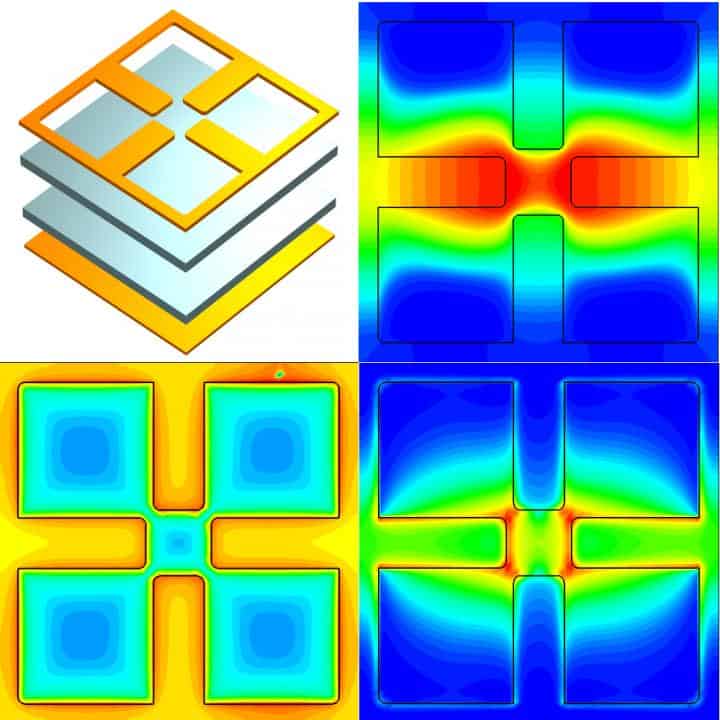
Research at Duke University in North Carolina has led to the development of meta-materials that simplify the construction of sensors to detect characteristic infrared signatures from hydrocarbon molecules. The sensors will be capable of detecting infrared signatures even while moving.
The Duke team, working with optoelectronics materials company SRICO, believes that these detectors are smaller, lighter, faster, more powerful and cheaper than currently available technology.
In a paper in the journal Optica, the team explains how it constructed the sensor by layering a pattern of pure gold on top of a slice of crystalline lithium niobate. This is a pyroelectric material, that is, it generates a charge when it gets hot. The crystal slices, some 600nm thick, were prepared by SRICO engineers using an ion beam to peel off the slices from a larger crystal. The top layer of the gold is treated so that it only allows a few specific frequencies of infrared radiation through to the crystal; the metal also conducts the charge generated by the warmed niobate into an amplifier to produce a visible signal in a detector.
In conventional infrared detectors, filters or moving mirrors need to be used to select the frequencies absorbed by a black material and fed into detector circuitry.
“The benefit of using metamaterials is that different components required in a detector can be combined into one feature," said Willie Padilla, professor of electrical and computer engineering at Duke, who led the academic team. "That simplification gains you a lot of efficiency." Jon Suen, a postdoctoral associate in Padilla's laboratory, added: "These designs allow this technology to be 10 to 100 times faster than existing detectors because the heat is created directly by the crystal.”
Scanning the detector rapidly across an area with a suspected methane leak would allow the source of the gas to be identified quickly from its infrared signature. Similarly, it could detect whether crops have ripened by ascertaining how much ethylene they are emitting. For recycling applications, it could be quickly scanned across mixed plastics to detect the most recyclable materials.
"You could even make this into a low-cost lab instrument for spectroscopy for medical samples," said Padilla. "I'm not sure what the eventual price point would be, but it'd be a lot less than the $300,000 instrument we currently have in our laboratory."




Swiss geoengineering start-up targets methane removal
No mention whatsoever about the effect of increased methane levels/iron chloride in the ocean on the pH and chemical properties of the ocean - are we...